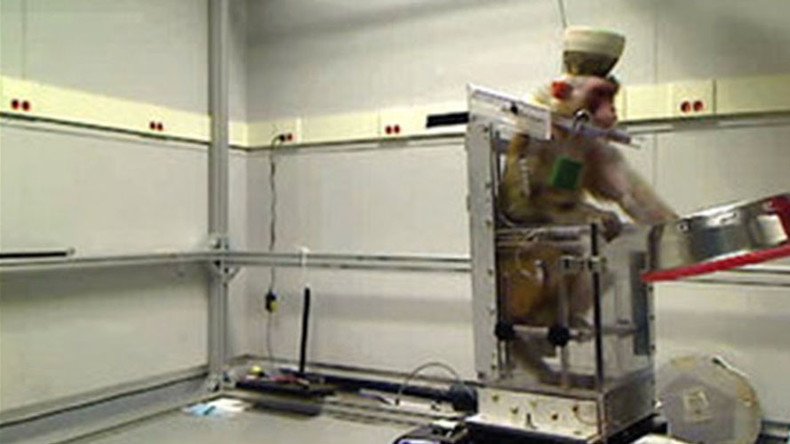Monkeys learn how to ride wheelchairs using mind power (VIDEO)

US scientists have developed a brain-machine-interface (BMI) that enables monkeys to control a wheelchair with their minds. The study highlights new opportunities for the paralyzed.
Researches from Duke University, North Carolina, have developed a device to interpret the brain’s cortical activity and produce wheelchair movements, their article in Nature's Scientific Reports reads. The gear was tested on two rhesus monkeys, implanted with a wireless neuron activity recorder. The simians were motivated by grapes.
READ MORE: DARPA aims for brain implants to control machines
At first, the monkeys were driven around in powered wheelchairs with their brains’ impulses recorded by an intracranial scanner, which later allowed for creating a steering algorithm. Test runs were made in straight lines: monkeys were put in three different locations, while the food dispenser stayed in the same spot. The trajectories were distorted by making corrections in turning and over steering. After the monkeys had mastered the basic technique, backward movements were added as well. All tests proved successful.
“The present results support our recent clinical observation that when paraplegic patients are subjected to intense BMI training, they not only become capable of regaining walking, using a robotic exoskeleton, but they also can exhibit signs of partial neurological recovery of sensorimotor and autonomic functions,” the researchers wrote. They did not indicate when, and whether, the device will be released on the market.
READ MORE: Paralyzed man walks in 1st-ever proof direct brain control possible













